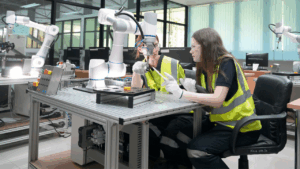 The standard has been technically revised and the new standard, ISO 14001: 2015 was released on September 15, 2015. This third edition of the standard cancels and replaces the ISO 14001: 2004.
The standard has been technically revised and the new standard, ISO 14001: 2015 was released on September 15, 2015. This third edition of the standard cancels and replaces the ISO 14001: 2004.
What this means to the ISO 14001 certified facilities or organizations following an ISO 14001 standard is that they need to update their environmental management system to align with the new requirements.
1) What are the key changes and how do they impact the organizations who have implemented the standard at their facilities?
This third revision is a fundamental revision of the standard, with far greater implications for organizations than the previous revision. While the second edition (2004) was mostly ‘cosmetic’ changes, the third edition seems to be more current and responsive to the changes in the current context. We can summarize these changes in two broad categories:
- The revised standard has a new structure and “common text”.
- There is an addition of new requirements or ‘explicit re-enforcement’ of old requirements that existed before but were often lost in different interpretations by different users.
While the High Level Structure (HLS) and common text make it easier for organizations to integrate with other ISO management system standards (e.g. ISO 9001, quality management system), the new requirements will help organizations to have broader strategic considerations of their environmental context – linking environmental performance with sustainable development.
Some of the key changes include:
- Greater focus on leadership
- Increased prominence of environmental management within the organization’s strategic planning processes
- Addition of proactive initiatives to protect the environment from harm and degradation, such as sustainable resource use and climate change mitigation
- Improving environmental performance added
- Lifecycle thinking when considering environmental aspects
- Addition of a communications strategy
2) What does it mean to Canadian companies and how can organizations transition to the new Standard?
Canadian companies have shown a consistent growth in implementing ISO 14001. About 276 ISO 14001 certificates were issued in Canada in 1999 and the number rose to 1775 certificates being issued in 2013 (ISO survey). This is quite an impressive growth considering that it is a voluntary standard and often internally driven by organizations in Canada (as opposed to many developing countries where market drivers have fuelled the growth of ISO 14001 certifications).
With the release of ISO 14001:2015, organizations have three years to transition to the new standard. The obvious first step for them would be to start with a gap analysis. Conduct a gap analysis, not only for the EMS, but other related business processes with which ISO 14001:2015 will expect a greater degree of integration. Owing to the increased emphasis on higher level business management, this should also include processes for strategy development. Check; Kroger Weekly Ad, ALDI Weekly Ad, ALDI Catalogue, IGA Catalogue, Meijer Weekly Ad, Publix Weekly Ad, Coles Catalogue, Supercheap Auto Catalogue.
The gap analysis should focus on all the areas of change and explore how the new structure (HLS) can be accommodated. It is not a requirement to adopt the new clause numbering system, provided that the new requirements are incorporated into the organization’s system. Also, focus on integrating the new and existing EMS requirements further into the overall business processes.
3) ISO 14001:2015 is released. So what’s next?
The revision of ISO 14004: 2004, Environmental management systems-General guidelines on principles, systems and support techniques, is currently underway.
The National Member Bodies agreed upon its revision by ballet in late 2011. The revisions are designed to better reflect the title and scope of ISO 14004 and its contents with particular emphasis on:
- Users’ needs
- How an organization may develop, maintain and improve an EMS based on ISO 14001:2015, and
- Implementation of environmental management requirements into the organization’s overall management system
4) What can I do to learn more?
ECO Canada is offering a series of one day workshops and two-day training courses in major cities across Canada. Visit our Technical Training and Events to view our upcoming ISO 14001: 2015 training and professional development events.
The focus of all these programs is to create awareness and provide knowledge to the participants who want to implement the requirements of ISO 14001 or transition from the old standard to the new standard.
We also have started a free helpline to assist the environmental community. If you are an EP and you have questions about ISO 14001 please connect with us at info@eco.ca. Or refer to ISO for more updates.





